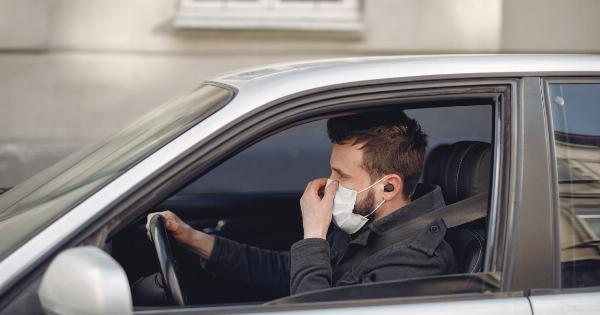Driving is an essential part of our daily lives, allowing us to commute to work, run errands, and visit loved ones. However, there is one driving habit that has become increasingly bothersome and even dangerous.
This habit, which many of us have witnessed or experienced firsthand, is a cause for concern and has led to growing frustration among motorists. In this article, we will explore why we’ve all had enough of this driving habit and discuss its implications on road safety and overall driving experience.
The Rise of Distracted Driving
Distracted driving is the habit that has become a subject of great concern. With the widespread use of smartphones and other electronic devices, drivers have become more prone to distractions on the road.
Whether it’s texting, scrolling through social media, or even watching videos while driving, these distractions divert the driver’s attention away from the road and significantly increase the risk of accidents.
According to a study by the National Highway Traffic Safety Administration (NHTSA), distracted driving claimed the lives of over 2,800 people in the United States alone in 2018.
This alarming statistic highlights the severity of the issue and the urgent need to address this dangerous habit.
The Impact on Road Safety
The consequences of distracted driving are far-reaching and affect not only the drivers themselves but also innocent pedestrians, cyclists, and other motorists.
When a driver is distracted, their reaction times are significantly slower, making it harder to anticipate and avoid potential hazards on the road. This can result in rear-end collisions, pedestrian accidents, and even fatal crashes.
Moreover, distracted driving does not only involve smartphone use. Other common distractions include eating or drinking while driving, grooming, adjusting GPS systems, and talking to passengers.
All these activities take the focus away from the primary task of driving and pose serious risks to everyone on the road.
The Legal Consequences
Recognizing the dangers of distracted driving, many countries and states have implemented laws to combat this habit.
In many places, using a handheld device while driving is strictly prohibited and can result in heavy fines, license suspension, and even jail time. However, despite these laws, many motorists continue to engage in distracted driving, disregarding the potential consequences.
The enforcement of these laws is crucial to deter drivers from engaging in distracted behavior.
Additionally, educational campaigns and public awareness initiatives can help to emphasize the importance of staying focused while driving and the potential consequences of negligent behavior. By addressing the issue through both legal means and public education, we can hope to reduce the prevalence of distracted driving.
The Psychological Impact
Aside from the obvious safety implications, distracted driving also has a psychological impact on both the drivers and those affected by their actions.
Witnessing or being involved in an accident caused by a distracted driver can lead to trauma and anxiety. The fear of being on the road with drivers who are not fully attentive can take a toll on one’s mental well-being and affect their overall driving experience.
Moreover, drivers who engage in distracted behavior often experience a false sense of confidence in their abilities to multitask. This overconfidence can lead to a disregard for traffic rules and a lack of consideration for other drivers.
The resulting road rage and aggression further contribute to a hostile and unpleasant driving environment.
The Need for Cultural Change
Addressing the issue of distracted driving requires a collective effort from all individuals within society. It is crucial to promote a culture of safe driving where everyone understands the importance of staying focused while behind the wheel.
This can involve educational campaigns in schools, workplaces, and communities, highlighting the dangers of distracted driving and providing practical tips for staying focused on the road.
Furthermore, technology can play a role in curbing distracted driving. Smartphone apps and built-in features in modern vehicles can detect when a driver is using their phone while driving and provide reminders or block certain functions.
While such technology cannot completely eliminate the problem, it can serve as a helpful tool for promoting safer driving habits.
The Role of Driver Education
Driver education programs play a vital role in shaping responsible and aware motorists. By incorporating explicit content on the dangers of distracted driving, these programs can instill a sense of responsibility in future drivers.
Additionally, it is essential to have rigorous testing procedures to ensure that drivers are fully aware of the risks and regulations associated with distracted driving.
Updating driver education curricula and ensuring ongoing training can contribute to reducing the prevalence of distracted driving.
Reinforcing the importance of attentive driving and instilling a sense of social responsibility can go a long way in creating safer roads for everyone.
Building a Safer Future
It is evident that the driving habit of distracted driving has become a pressing issue that needs immediate attention. The consequences of this habit are far-reaching and impact the safety and well-being of countless individuals.
By implementing stricter laws, conducting public awareness campaigns, and improving driver education programs, we can begin to address this issue and build a safer future on the roads.






























